TMJ Dysfunction: Causes, Symptoms and TMJ Treatment
What is TMJ Dysfunction?
'TMJ' stands for 'temporomandibular joint', which is the joint that connects the jawbone to the skull. Its
function is to allow the lower jaw to move - allowing it to open and close and move from left to right. The anatomy of the TMJ is somewhat
similar, but more complex, to a knee or elbow joint, whereby it is a ball and socket joint with a disc
lying between the two.
The disk allows the bones to glide smoothly and prevents the bones from grinding against each other, which erodes their integrity and
causes TMJ pain.
As the name suggests, TMJ dysfunction occurs where the joint/socket complex is not working correctly, which causes the temporomandibular joint to dysfunction - ultimately creating pain and discomfort in the jaw and other parts of the body.
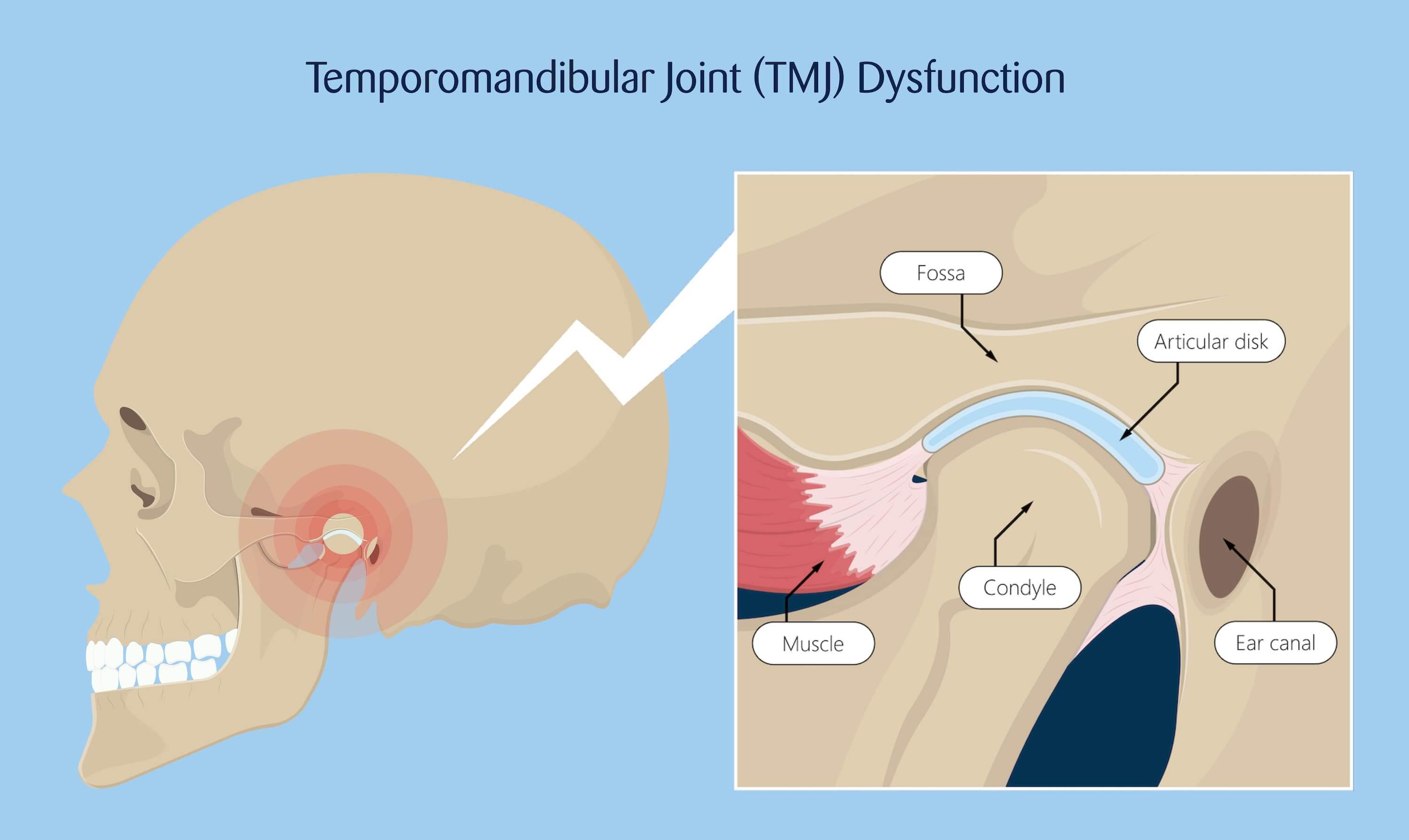
What Causes TMJ Dysfunction?
TMJ dysfunction occurs when the jaw joint or disk within the jaw is in the wrong spot. Usually, this happens because the lower jaw is positioned too far back in the face - causing the disk to slip forward, creating friction between the skull and jawbone. Thus, we often see a link between TMJ dysfunction and an overbite.
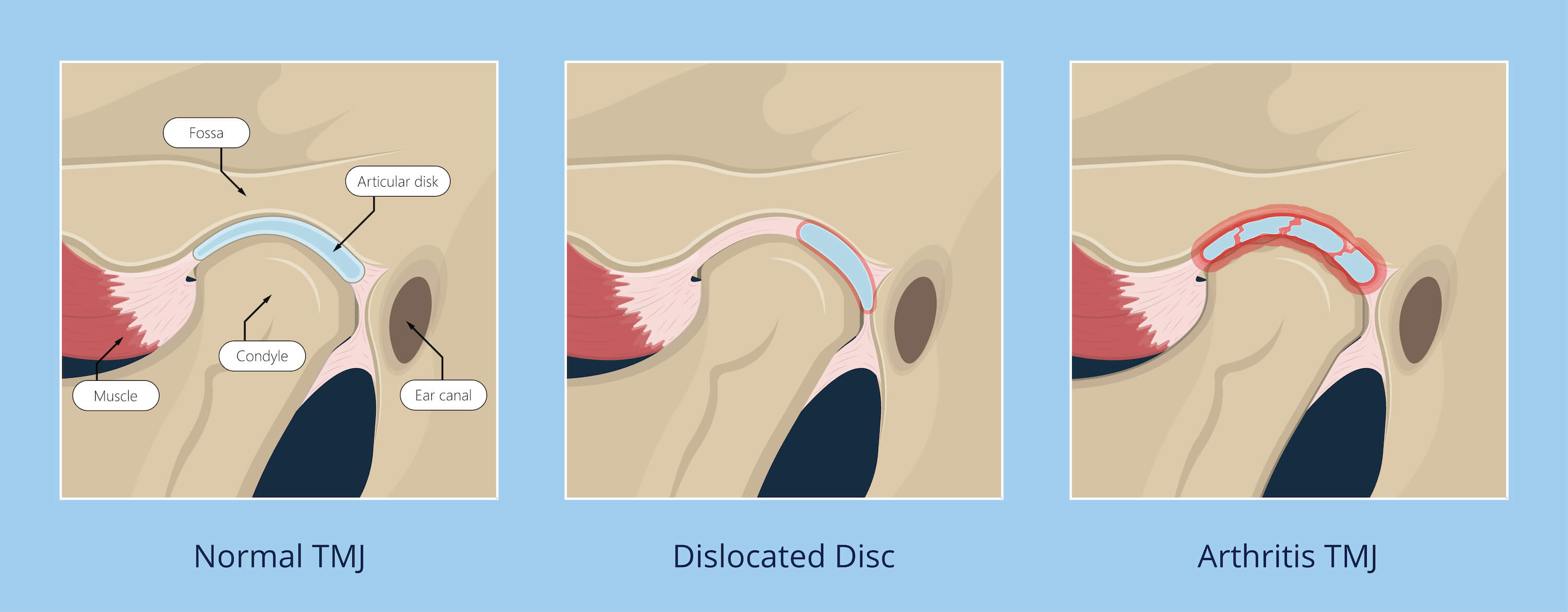
TMJ Dysfunction and the Overbite
To understand what causes TMJ dysfunction, it is first helpful to understand what causes an overbite - where the
lower jaw is positioned too far back in the face. An overbite is caused by improper facial posture, where the
tongue sits away from its ideal resting place on the roof of the mouth. When the tongue sits off the roof of the mouth like this, it forces
the mouth to hang open, which then drags the lower jaw down and backwards. When people have an open mouth posture
like this (commonly seen in children who breathe through their mouth), the face will develop so that the jaws are positioned too far back
in the face. When this happens, the TMJ becomes cramped, and it becomes common for the disk to slip forward -
ultimately resulting in TMJ dysfunction.
Some of the main catalysts for an overbite resulting in TMJ dysfunction are:
-
Breathing through the mouth instead of the nose (caused by airway issues that result from allergies, infections and inflammation).
- Thumb sucking
- Excessive use of a dummy or pacifier
To learn more about overbites and how they can cause TMJ dysfunction, click
here.
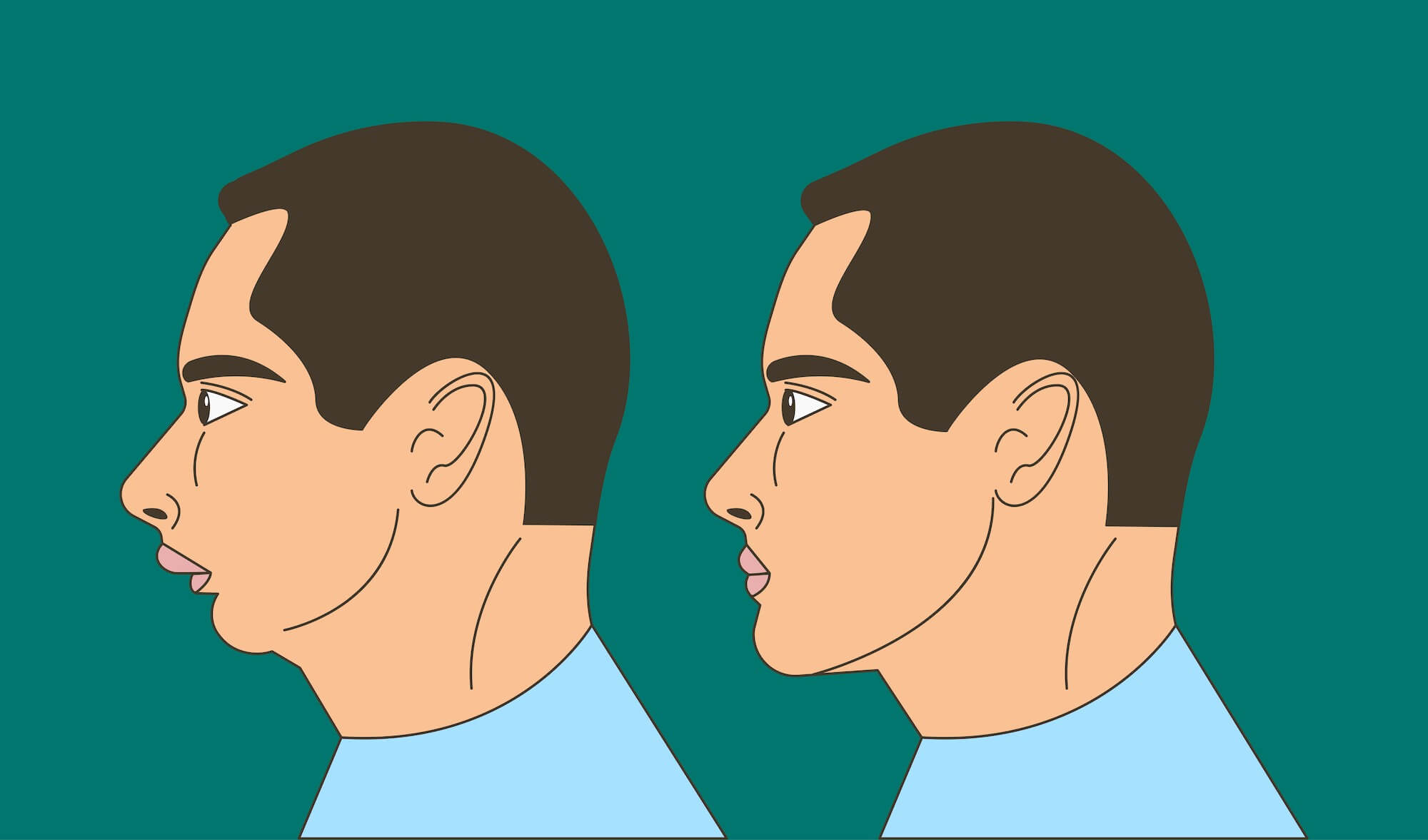
Understanding the Overbite and How to Correct it
An overbite results in a less attractive face, but also negatively affects the function of the mouth, jaw and airway -
creating issues like TMJ dysfunction...
Read
More
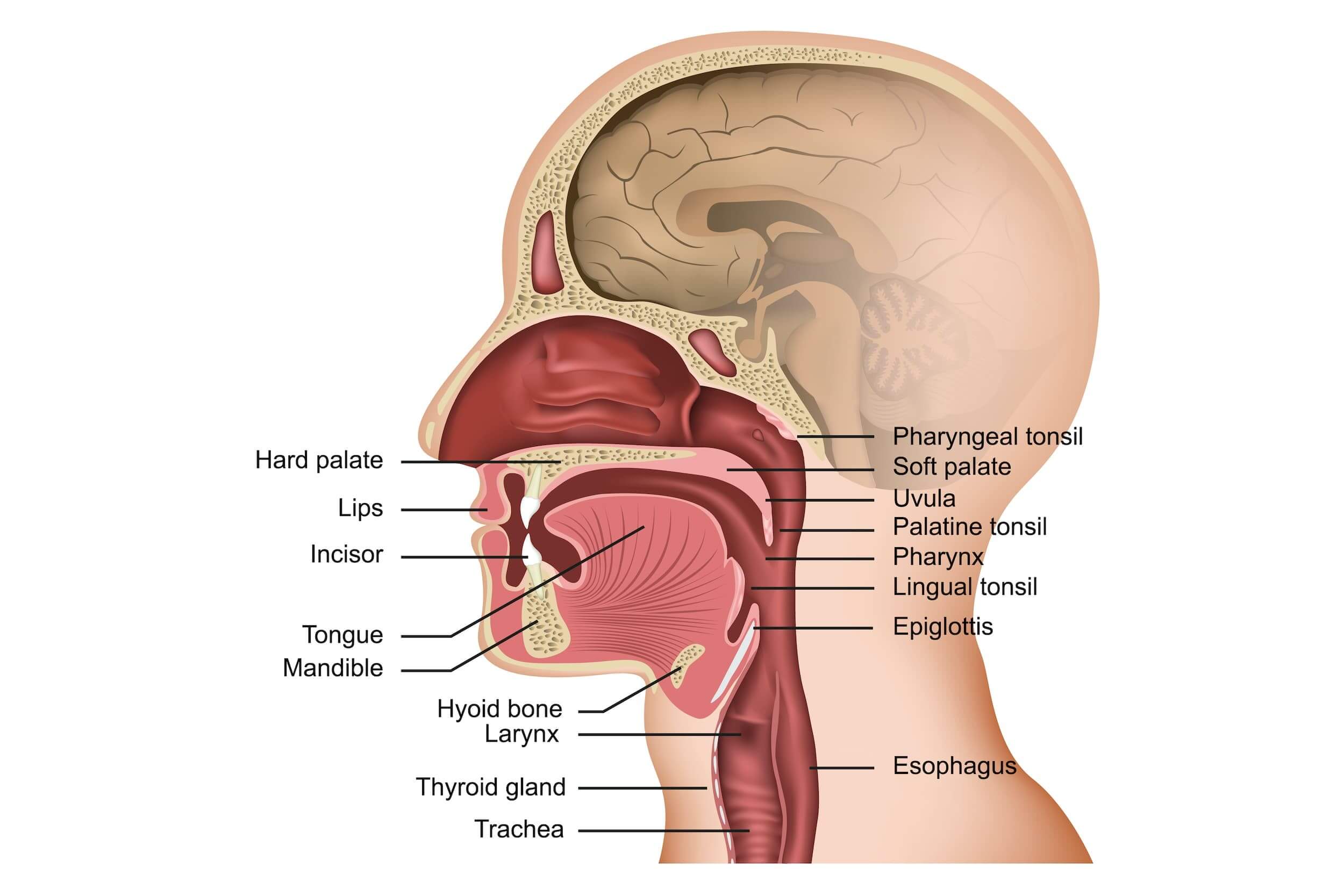
Tongue Posture: What is Proper Tongue Posture?
Improper tongue position drags the face down and backwards - causing the jaw joints to become jammed - often resulting in TMJ
dysfunction...
Read
More
Other Causes of TMJ Dysfunction
Although an overbite is the most common cause of TMJ dysfunction, it is not the only cause. TMJ dysfunction is
also caused by things such as:
- A crossbite (where the jaw is misaligned and positioned further to one side of the face than the other)
- Clenching of the teeth (due to stress/anxiety)
- Teeth grinding (due to stress/anxiety)
- Sleep apnea
Preventing TMJ Dysfunction
Adults most commonly suffer TMJ dysfunction. However, improper facial posture and tongue position develops in childhood. Where improper facial and tongue posture is identified and treated in childhood, TMJ dysfunction can be prevented. To learn more about this, read our article on orthotropics and how it fosters proper facial growth in children.
TMJ Symptoms and TMJ Pain
TMJ dysfunction is responsible for an array of symptoms and painful sensations - the most common of which are:
- Jaw clicking (when the jaw joint clicks upon movement)
- Crepitus (when the jaw joint makes a crunching sound when moved)
- Locking of the jaw (where the jaw seizes up)
- Chewing difficulty
- Jaw pain
- Muscle spasms in the jaw
- Pain that feels like a toothache
- Pain that feels like an earache
- Headaches
- Pain in the temple region
- Head and neck pain
- Shoulder pain
- Neck and shoulder stiffness
- Referred nerve pain (commonly felt in the neck, shoulder and hip)
TMJ Treatment
There are various methods of TMJ treatment; however, it is important to understand that each treatment method will
deliver different results. TMJ treatments can be broadly distilled into five groups:
- Pain relief
- Splint therapy specifically designed
- Surgery
- Orthodontics
- Orthotropics
TMJ Treatment With Pain Relief
As TMJ dysfunction can be quite painful, many patients will first look for pain relief to better function in their daily lives. While painkillers
and muscle relaxants
(like valium) can often alleviate pain in the short term, they aren't great options for longterm improvement. The reality is, they merely
mask pain and do nothing towards the treatment of TMJ dysfunction.
TMJ Treatment With Splint Therapy
The next form of TMJ treatment is splint therapy, which involves wearing appliances known as splints or bite guards. Splints are removable appliances, so they are often only worn during the evening. They are designed to reduce
clenching
and grinding, relieve tension and encourage the jaw to move towards its ideal position. Similar to pain relief,
splint therapy is typically confined to relieving symptoms and does very little towards TMJ treatment.
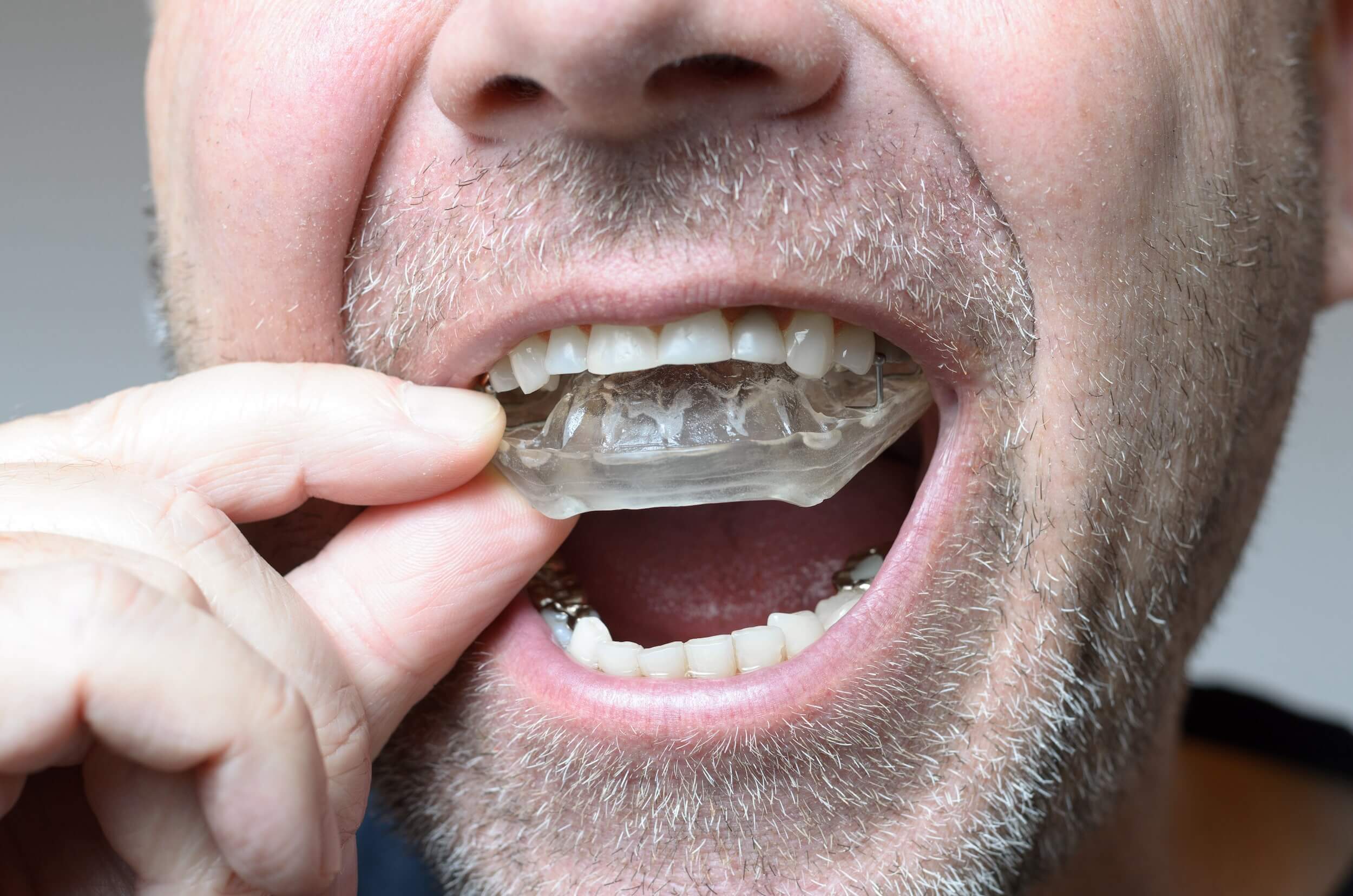
A typical occlusal splint.
TMJ Treatment With Surgery
Generally speaking, there are two approaches to TMJ surgery - one in which the jaw joints are simply replaced, and
another where the jaws are brought forward. It is important to distinguish between these two types of TMJ surgery as they deliver
vastly different results.
Jaw joint replacements may have their place; however, they typically fail to address the cause of TMJ dysfunction.
This is because they do nothing to correct the position of the jaws. If TMJ dysfunction is caused by improper tongue posture, jaw joint
surgery will do very little towards longterm correction of TMJ dysfunction.
On the other hand, surgeries that move the position of the jaws forward are likely to achieve better results as
they do more towards correcting the underlying cause of TMJ dysfunction. The downside, however, is that surgeries
can be invasive and, in an ideal world, should be avoided. Thus, surgery should only be used in extreme cases
where the severity of TMJ dysfunction is such that orthodontics/orthotropic treatment is not viable.
TMJ Treatment With Orthodontics
Orthodontics recognises that TMJ dysfunction is caused by improper positioning of the jaw joints. Thus, the focus
of orthodontic treatment is to improve the position of the jaws. Orthodontists will often use expansion appliances to widen the
jaws
and bring them forward into the correct position. Typically, this works well as it treats the underlying cause of
the problem, thus achieving long-lasting and sustainable results.
TMJ Treatment With Orthotropics
Orthotropics is similar to orthodontics when it comes to treating TMJ dysfunction, wherein expansion appliances
are used to correct the jaw's position. However, it also takes a more holistic view of TMJ dysfunction - paying
attention to the airway. In orthotropic treatment, an ear, nose and throat specialist is often engaged to work
with the patient to facilitate proper breathing. Orthotropics recognises the links between TMJ dysfunction and
airway-related issues like snoring and sleep apnea.
Our Approach to TMJ Treatment at Eric Davis Dental
As practitioners of holistic health, we believe in using orthotropic philosophy to treat TMJ
dysfunction.
We have found that by taking a holistic view of health and respecting the links between TMJ dysfunction and airway issues, we can relieve
the pain associated with TMJ dysfunction and restore the function of the jaw and airway.


